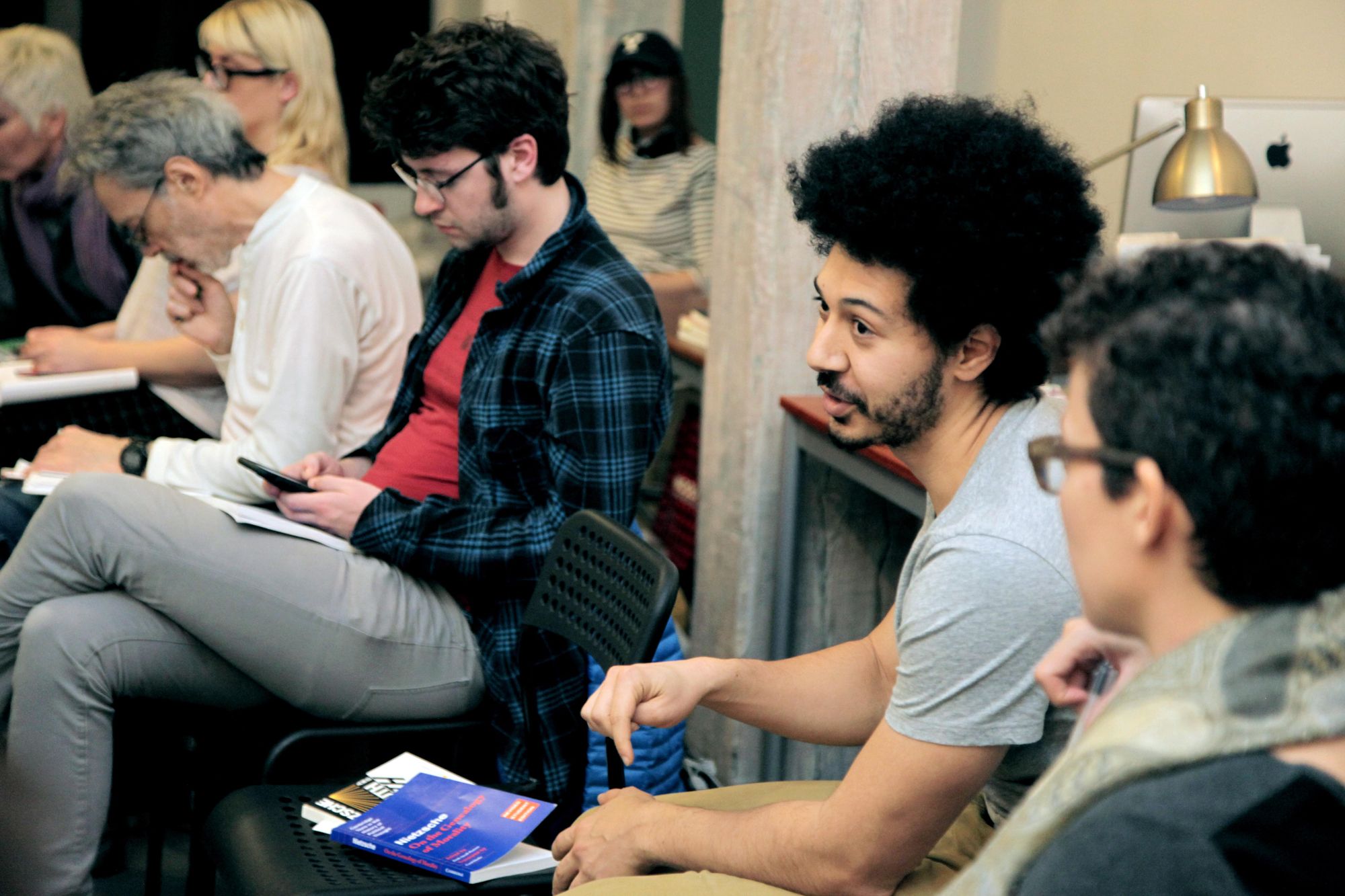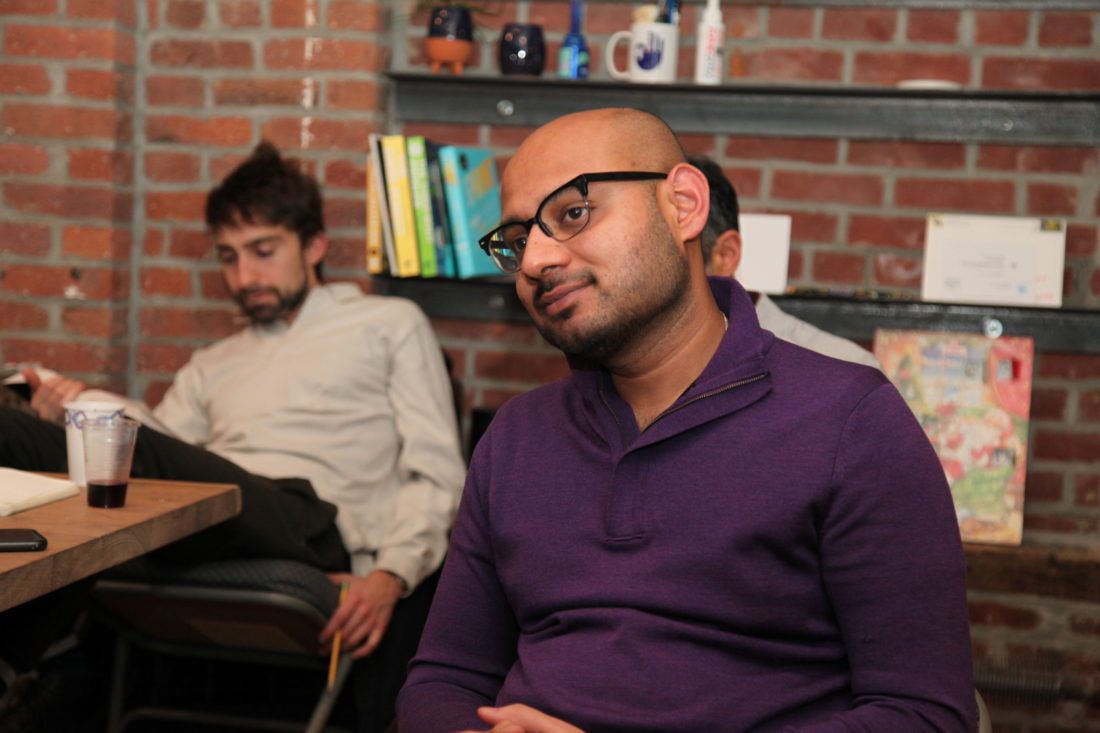Learning: After Classes Moved Online, Enrollment Skyrocketed


Six years ago, Maggie Gerrity — a Manhattan-based artist, bookkeeper, and lifelong student — found herself longing for the academic rigor she’d had in college. She had recently learned about Brooklyn Institute of Social Research, or BISR, a teaching and research institute based in Downtown Brooklyn, and enrolled in her first course — an introduction to the work of Argentine author, Jorge Luis Borges.
A 64-year-old mother with an undergraduate degree in Art History, Gerrity was never able to find her way to graduate school; finances, and life, got in the way, she told Bklyner. A heavy reader and self-proclaimed autodidact, she still found herself increasingly drawn to academia, seeking it out in any way she could.
Gerrity is one of nearly three thousand students currently enrolled in online BISR courses. BISR provides working adults with accessible but rigorous coursework in areas ranging from Mathematics to Philosophy to Biology, as their website states. With a couple of exceptions, they don’t offer credits or degrees, and students can enroll in individual courses for a $315 fee — well below the cost of most university courses, and BISR also offers a limited number of scholarships to help cover it.
After faculty sent the notification that courses were moving online, however, a sizable number of students enrolled in March classes dropped out, Program Director Mark DeLucas told Bklyner. While some of that was probably due to the switch, DeLucas said, other pandemic-related complications were likely at play.
Gerrity, however, didn’t hesitate to keep on with them; even if they no longer met in person, she said, the courses had become an important part of her life – particularly since the 2016 election. “It was increasingly a place I wanted to be,” she said.

After setting up the online teaching infrastructure, DeLucas explained, they saw enrollment rise to a record high almost immediately.
The total enrollment for 2020 was nearly 2,800, compared to 1,499 in 2019, a fact that DeLucas said was facilitated by the new virtual platform and its lack of geographic boundaries. Students were signing in from across the country and even from countries like Syria, Singapore, and Lebanon. Still, BISR faculty faced one particular obstacle.
“At the point of the pandemic, we obviously had a huge problem,” said Executive Director Ajay Singh Chaudhary. “Which is that we are built on this model of in-person, right?”
Physical community is a critical part of BISR’s courses, which are conducted as seminars; instead of a lecture-based model, classes are heavily discussion-based. When staff made the call in February last year to make all classes fully virtual, Chaudhary said, they worried how that model would translate to a platform like Zoom.
“We had to take even more seriously than before – we took it pretty seriously before – the sort of social aspect,” said Chaudhary.
There are, of course, some things that Zoom will never fully replicate.
“Meeting with people on Zoom, especially people who you’re not seeing regularly – it’s this weird feeling of both being with people and also missing them at the same time,” said Gabe Back-Gaal, a 28-year-old regular BISR student and Brooklyn native.
Relationships with other students form a significant part of the classroom experience, said Rebecca Ariel Porte, one of BISR’s Core Faculty members and an instructor for courses in literature and philosophy.
“I know so many students who have forged both friendship and community of different kinds, beginning in a BISR classroom,” she said. That, she said, is something that Zoom can’t replicate.
For Gerrity, Zoom makes it harder to pick up on other people’s social cues.
“The Zoom thing is like, I have no idea – what are people looking at? And I don’t even know how loud my voice is over the computer,” she said. It’s hard to interrupt symposium-style classes over Zoom as well, she said.
BISR has come up with a variety of ways to transcend these limitations. In Chaudhary’s own classes, he said, he focuses his camera on a physical whiteboard instead of using the digital whiteboard in Zoom, which would block students’ views of each other. Just being able to see one another is extremely beneficial to both the learning and the community aspects of class, he said.
“It’s the kind of little, meaningful thing that sometimes gets brushed aside.”
BISR also encourages students to keep their camera on, said DeLucas, which roughly 75% actually do. “It feels nice,” he said. They also employ a second faculty member — something that was “instrumental” for in-person classes, and is even more meaningful for virtual ones — to help encourage interaction between students in the chat, and to provide an additional voice alongside that of the teacher. To DeLucas, BISR actually has the advantage of a class format that fosters a more “personalized classroom feel, that’s engaging for people,” in an online setting, said DeLucas, and which can bring back some of the intimacy of an in-person class.

In spite of the few minor hang-ups she has, Gerrity said, the virtual classes manage to maintain much of what she loved about the in-person ones.
“Because we’re all adults living in the real world, some people read everything, some people read very little,” she said. “Everybody comes to it from their own place. And it ends up being something that can be frustrating, but also really wonderful in a way that that model would never have been.” That experience holds true for the classes held over Zoom, she said.
“The super short answer is, ‘oh my god, I’ve gotten to keep taking these classes,” said Back-Gaal. “Which has been fantastic.”
For Porte, one of the benefits of Zoom classes is that students have the ability to hold parallel conversations with each other in a chat window while the class is going on.
“It’s sort of lovely to have that option for kind of written exchange at the same time that there is the kind of verbal exchange that’s going on in the classroom,” she said. “And I think that people do like that, and benefit from it in many ways – it’s a different form of exchange.”
As DeLucas mentioned, another significant upside of offering classes online is that people who couldn’t access the courses before can now do so freely, from people with mobility issues to people living in other parts of the U.S., and even people in other parts of the world: Chaudhary himself has taught classes that simultaneously included students from the U.S., Singapore, and Australia. Even when they go back to in-person learning, Chaudhary said, they plan to maintain that same online presence.
“The online stuff that was sort of forced by the pandemic has become a very central part of what we’re going to be doing, going forward,” said Chaudhary.



